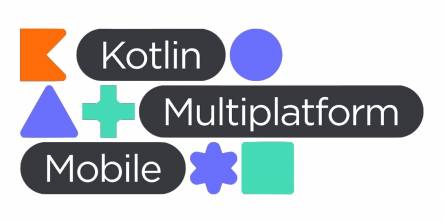Overcoming Common Cloud Migration Challenges

Cloud migration is essential for businesses that want to embrace digital transformation. But this transformation comes at a price, with its own challenges that must be addressed early to ensure business continuity and success. The challenges can range from data security and privacy to technical complexities and more and can discourage many organizations.
However, there is a solution to almost every challenge, and in this article, I aim to discuss some of the common challenges of cloud migration and ways to overcome them.
Challenges In Cloud Migration And Its Solutions
Data security and privacy: Data security and privacy are companies' most significant challenges during cloud migration. Data movement to the cloud exponentially increases the potential risk of unauthorized data access, hacks, and breaches. Because of such challenges, businesses are not readily inclined to hand over their sensitive and confidential data to third-party cloud providers despite secured cloud environments.
Solution – This challenge can be mitigated by adopting a diversified approach. One of the methods is to choose a cloud service provider that offers strong security protocols that induce encryption protocols when the data is at rest or in transit. The cloud provider should also be able to offer regular security audits that comply with international data protection regulations, with well-defined user roles, permissions, and multi-factor authentication protocols. Regular backups with disaster recovery plans also help ensure data integrity and availability. These solutions can effectively address the challenges of data security and privacy and enable organizations to plan and migrate to the cloud securely.
Data governance: The management and regulation of data within an organization is termed data governance. The challenge for organizations in data governance is ensuring that the data to be migrated remains available and usable. It is also necessary to ensure that data integrity and security are not compromised during migration.
Solution - This typical data governance challenge can be resolved by ensuring that the cloud providers implement their data governance policies, practices, and strategies. They also need to ensure that regulatory compliance is followed. By defining clear roles and responsibilities for data management, putting down data quality standards, and following required regulations, organizations can create clear guidelines for data governance. They can further streamline the process by using data governance tools that provide unique features such as data cataloging, data tracking, and automation in policy applications. Such solutions can help organizations in data governance while ensuring that the data is used in a responsible fashion during the process of migration.
Compatibility with legacy systems: While legacy systems continue to run and perform the functions they were designed for, they are limited in functionality as they cannot be updated or maintained. Since these systems cannot be updated, they cannot run or work smoothly or consistently with the modern cloud architecture. Communication and effective operability without loss of performance or functionality of such legacy systems are organizations' main challenges during cloud migration. This mismatch creates conflicts that can include problems in integration and lower application performance, as well as instability in the systems during migration.
Solution - The solution to this challenge involves careful planning and the use of appropriate technologies. Firstly, a thorough assessment of the legacy system is needed to understand its architecture, dependencies, and potential compatibility issues. This can help in devising a migration strategy that minimizes disruption. Secondly, using middleware or other integration tools can help bridge the gap between the legacy system and the cloud environment. These tools can facilitate data transfer and ensure seamless communication between different systems. Lastly, in some cases, it may be beneficial to modernize or refactor legacy applications to make them cloud-compatible. This can enhance performance and enable the full utilization of cloud capabilities. By addressing these challenges head-on, organizations can ensure a smooth and successful cloud migration.
Disruption in services: Service disruption refers to the potential interruption of operations and services that can lead to customer dissatisfaction and financial losses. It can be a significant challenge in cloud migration and can occur because of various reasons, including data loss during migration, application downtime, and compatibility issues.
Solution - This challenge can be resolved by using a well-planned migration strategy. This can include risk assessment, redundancy planning and consistent data backup. Moving services in stages, and implementing a phased migration approach also helps minimize service disruptions. Leveraging automation tools also helps streamline the migration process and reduces human errors, while putting a strong contingency plan can help address and minimize issues that can arise during migration.
Vendor lock-in: The difficulty of moving data and services away from one cloud service provider to another creates a practical challenge for organizations planning cloud migration. Many reasons for changing to a cloud provider include proprietary technologies, APIs, and services. The challenge can often lead to increased costs, potential data loss, service downtime, and reduced flexibility.
Solution - This can be resolved by using a multi-cloud strategy and open standards that reduce dependence on a single vendor. Organizations can also avoid this challenge by understanding the terms and conditions and the cost of opting out of the contract. The use of cloud management platforms and tools can also help in making it easier to switch providers.
Final Words
Cloud migration can present many challenges, but these can be addressed effectively by using services for cloud app development and proper planning. These services can offer tools and support to streamline migration, optimize performance, and manage cloud security. Organizations can overcome the challenges of cloud migration by investing in services that can harness the potential of the cloud environment and enable them to drive growth and increase operational efficiency.
Similar Articles
In today's technologically advanced landscape, understanding heat distribution is critical for enhancing efficiency and safety across various sectors. Infrared thermography, a pivotal imaging technique, has revolutionized how professionals view and analyze thermal performance.
In this digital age, there are many options available for marketing, but the one that stands out as one that can transform the marketing realm is programmatic connected TV (CTV). The programmatic CTV approach for advertising shows the changing trend in how brands would like to connect with their audience.
PHP has a dominant market position, with over 79% of websites powered to some degree. Developers majorly utilize organized and leveled PHP basic functions, known as PHP frameworks, to create flexible output.
The nonstop hum of machines around us, from the humongous industrial complexes to the processors within the gadgets, shapes our everyday lives. These mechanical advancements have become essential, driving everything from fundamental necessities to our vehicles, airplanes, and so forth.
New methods of managing a Pilate business are transforming the way studios operate. It simplifies routine tasks and helps fitness businesses to grow and facilitate their customers in various ways.
Discover if the S23 Ultra case is compatible with the S24 Ultra. Get insights on fit, protection, and functionality in this comparison.
In the era of astoundingly quick technological progress, organizations are increasingly feeling the need to adjust to the evolving market demands and their requirements by embracing digital transformation
With the rise of mobile devices and the ever-growing demand for cross-platform solutions, businesses are constantly seeking efficient ways to develop applications that can be used on multiple platforms. This is where Kotlin Multi Platform comes into play. Kotlin Multi-platform is a versatile technology that allows developers to write code once and deploy it on various platforms such as Android, iOS, and web.
Discover reliable network cabling solutions ensuring seamless connectivity for remote work. Enhance productivity with consistent connections anywhere.









